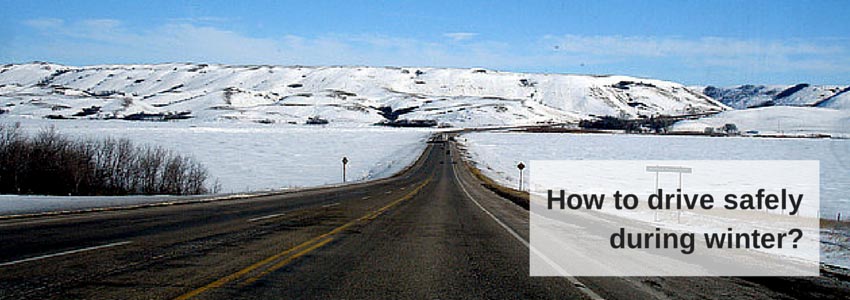How to drive safely during winter?
 How to drive safely during winter?
How to drive safely during winter?
The cold season comes not only with low temperatures and snow, but for drivers it is one of the most demanding seasons in what concerns the traffic conditions. Driving in wintertime is difficult especially for commercial vehicle drivers, who also need to respect the traffic conditions no matter the weather outside.
In order for winter to be less difficult, we have prepared a series of useful advice that make driving in wintertime less difficult. Send the below tips to the drivers of the cars in your fleet and they will reach the destination safely no matter the driving conditions characteristic to the cold season.
Preparing the car for winter
Just how, during autumn months, we prepare our wardrobe that protects us in the cold season, the car you drive needs to be prepared as well for below 0 temperatures and fallouts (snow, sleet).
In this respect we recommend that you pay a visit to your mechanic to check the following:
- The radiator: a radiator that does not work at maximum capacity will lead to an increased fuel consumption and to a lower car performance.
- Winter tires: apart from winter tires, make sure that the tire pressure is the right one. Thus the tires will not wear fast and the haulage power will decrease.
- Battery state: the battery is most affected by below 0 temperatures during wintertime. To make sure that you can start your car if the battery dies because of the low temperature, have in your trunk a set of quality electrical cables.
- The level of engine oil: this needs to be checked at least once a month, no matter the season. Thus you will prevent issues caused by an insufficient quantity of oil to lubricate the engine components, which can lead to serious damage.
Apart from the 4 things mentioned above, there are also other aspects that need to be checked like washer fluid, equipment for cold seasons: tools and liquids for defrosting the windshield and the locks, a small shovel, a bag of sand and tire chains.
Preventive driving – number 1 ally of the drivers
Given the more difficult traffic conditions during wintertime (snow covered roads, ice and abundant outfalls) preventive driving can help you avoid many problems. Pay special attention to the moving speed on snowy and/or icy roads because haulage and breaking increase almost 12 times compared to a dry road. Read up to the end and you will discover a stopping technique for winter times that you can apply to increase your safety and that of other traffic participants.
Apart from reducing speed, pay attention to the ”black ice” phenomenon. Many times ice can be invisible to the naked eye. Generally, during winter the asphalt has a grey to white shade. If the road you are taking is black and shiny, it is very likely that it is covered with a thin layer of ice (”black ice”). Drive with maximum carefulness in these conditions and avoid sudden stops.
The progressive braking technique – stop safely on icy roads
When you wish to stop on an ice covered road, press the brakes progressively until you feel the wheels starting to lock, then release it slowly. If you feel you are starting to lose control of the direction, immediately release the brake pedal and gain control again, after which you repeat the drill.
Moreover, when you gradually reduce speed, immediately release the clutch in order to let the wheels roll correctly in the inferior gear that you have chosen very quickly. If you press the clutch too long you risk the wheels starting to slide uncontrollably on the ice.
The secret of this technique is avoiding wheel locking for a long period of time. Also, the smaller the speed, the more effective the progressive braking technique so maintain a very reduced moving speed in order to avoid unpleasant events.
The advice above can apply to both drivers who operate commercial vehicle fleets and to people driving personal cars. Apply the above advice and this winter you will drive without being involved in unpleasant events.
And remember, just how you protect yourself during winter with a warmer coat, make sure you offer your engine the same protection. Click on the image below and contact a Star Lubricants agent who will lead you to the right lubricant to protect the car you drive even in winter conditions.







